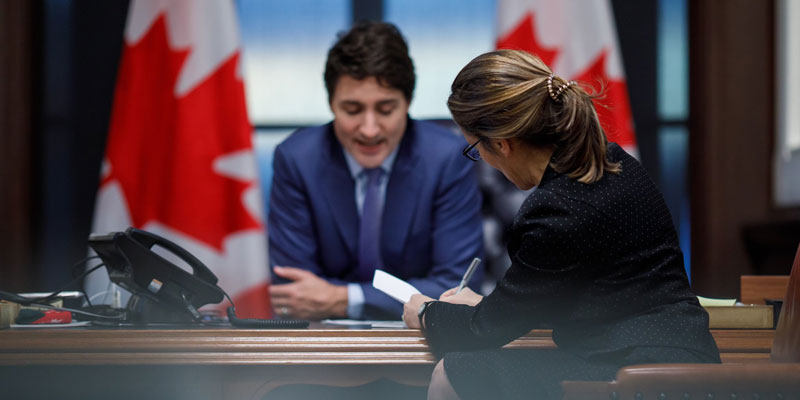To fulfill Trudeau’s latest fiscal promise, spring budget must chart path to budget balance

Prime Minister Trudeau’s end-of-year comments, where he committed to “absolutely” returning to a balanced budget post-COVID, will continue to ring hollow unless the spring budget includes decisive action.
The pre-Christmas statement to return federal finances to something approximating sustainable (i.e. balancing the budget) are reminiscent of the equally adamant statements made during the 2015 campaign when the Trudeau Liberals committed to three years of deficits and a balanced budget in 2019. For instance, in the Maclean’s Leader’s Debate, Trudeau chastised politicians of all parties for breaking their promises on deficits:
“Mr. Mulcair’s plan is to actually do what we know politicians of all parties—including my own—have done in the past, which is to say we’re going to balance the books and then oops, the numbers are worse than we thought. We’re going to have to break our promises. That’s not what I’m going to do. I’m being honest with Canadians. We’re going to run three deficits and we’re going to invest in the future Canadians need right now.”
Following the debate, on the campaign trail, Trudeau continued to make clear commitments to return to budget balance in 2019. For instance, at a campaign stop on Aug. 27, then-candidate Trudeau said:
“Our plan features three years of historic involvement, investment in the Canadian economy. That growth will eliminate the Harper deficit and we will balance the budget in 2019.”
Despite the unambiguous campaign commitment to limit deficits to less than $10 billion a year and return to a balanced budget in 2019-20, after winning the 2015 election, the Trudeau Liberals decided to run three years of deficits totalling $51.9 billion, more than double the campaign promise, with a deficit in 2019-20 of $39.4 billion.
As the old adage goes, actions speak louder than words. At every turn the Trudeau government has demonstrated little to no regard for balancing the budget and a focus on increasing spending.
Consider the windfall of 2018. The 2018 federal budget was delivered in late February and estimated a deficit of $18.1 billion. Between then and sometime before the federal Fall Economic Update was delivered (Nov. 21), the Trudeau government realized it had a windfall of $8.0 billion owing to $5.5 billion in higher revenues and $2.5 billion in lower-than-budgeted debt interest costs.
Had the Trudeau government simply maintained its spending plans from the spring budget, the deficit in 2018-19 would have been reduced by $8.0 billion, representing a 44.4 per cent decline. Instead, the Trudeau government hastily added $8.0 billion in new spending, leaving the original deficit of $18.1 billion in place. Again, the actions of the Trudeau government indicate its proclivity for increased spending and disinterest in reducing budget deficits and controlling debt.
Indeed, this proclivity for ever-greater spending is also demonstrated by the historically high levels of per-person federal spending pre- COVID. In 2019, per-person federal spending (excluding interest costs) reached $9,500 (adjusted for inflation), which is higher than at any point in the country’s history including both world wars.
Simply put, to have any credibility, the Trudeau government must include clear and decisive measures in the upcoming federal budget, indicating how and when it plans to return to budget balance. Until then, we remain skeptical given the government’s actions to-date.

